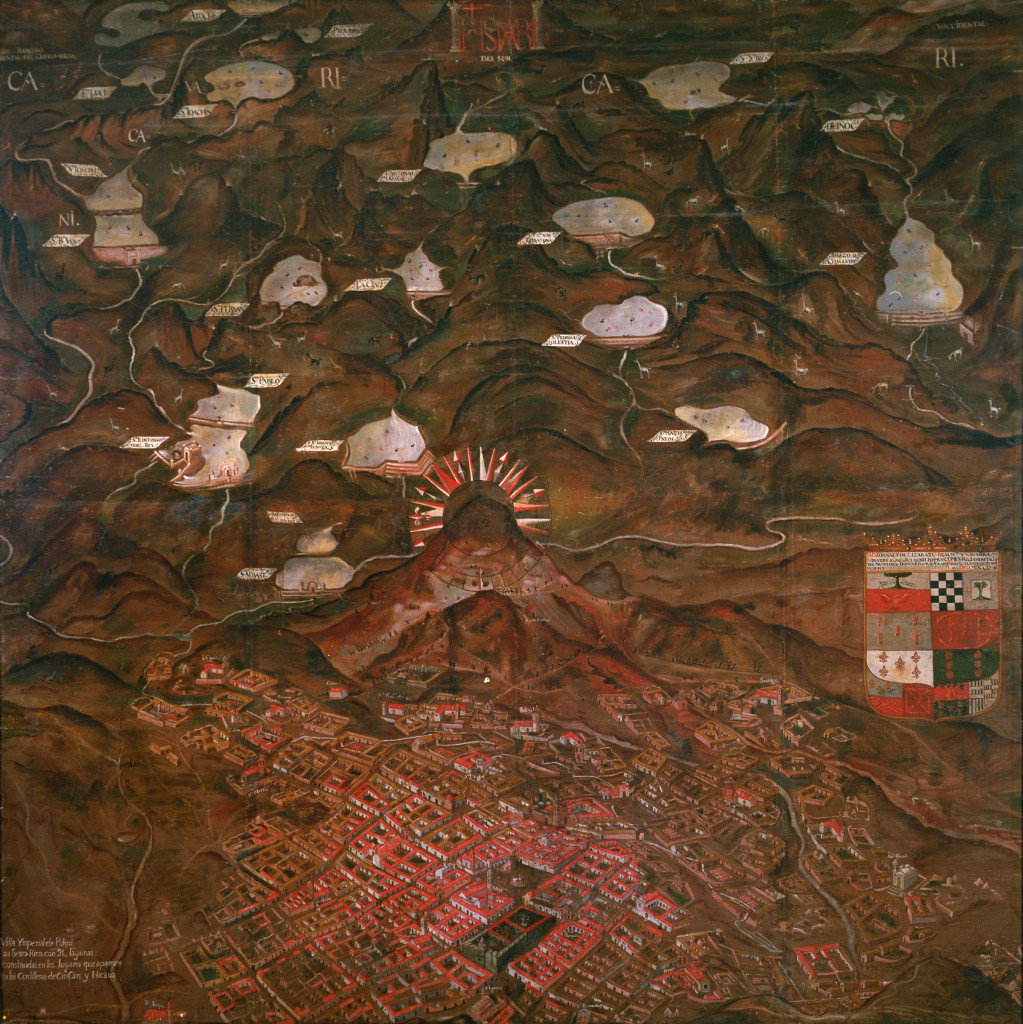The Imperial Villa of Potosí and the iconic mountain of silver that towers over it, called Sumaj Urku or ‘Beautiful Mountain’ in Quechua and in Spanish Cerro Rico or ‘Rich Hill’, were once home to one of the world’s largest cities, industrial complexes and silver mines. Borrowing techniques developed first in Mexico, Potosí refiners and native Andean workers blended pulverised ore with salt and mercury in large, open-air bins. The introduction of mercury amalgamation caused a boom on a scale never before seen in world history. Viceroy Francisco de Toledo (1569–80) is rightly credited and blamed for this radical transformation. Mendizábal´s detailed painting illustrates the reservoir and canal system implemented under Toledo.
Villa Imperial de Potosi by Francisco J. Mendizabal
Francisco J. Mendizábal, Cerro Rico and Villa Imperial de Potosí, with reservoirs supplying water to mills, c.1755–75 (courtesy of Museo del Ejército, Toledo, Spain).
Kris Lane
Further reading
- Arzáns de Orsúa y Vela, B. (1965) Historia de la Villa Imperial de Potosí, 3 vols., edited by L. Hanke and G. Mendoza (Providence, RI: Brown University Press).
- Bakewell, P.J. (1985) Miners of the Red Mountain: Indian Labor in Potosí, 1545–1650 (Albuquerque, NM: University of New Mexico Press).
- Bakewell, P.J. (1987) Silver and Entrepreneurship in Seventeenth-Century Potosí: The Life and Times of Antonio López de Quiroga (Albuquerque, NM: University of New Mexico Press).
- Barragán Romano, R. (2019) Potosí global: viajando con sus primeras imágenes (1550–1650) (La Paz: Plural Editores).
- Bueuchler, R.M. (1981) The Mining Society of Potosí, 1776–1810 (Syracuse, NY: Syracuse University Press).
- Capoche, L. (1959) Relación general de la Villa Imperial de Potosí [1585]. BAE 122. Edited Hanke (Madrid: Atlas).
- Cole, J. (1985) The Potosí Mita, 1573–1700: Compulsory Indian Labor in the Andes (Stanford, CA: Stanford University Press).
- González Casasnovas, I. (2000) Las dudas de la corona: la política de repartimientos para la minería de Potosí (1680–1732) (Madrid: CSIC).
- Lane, K. (2019) Potosí: The Silver City That Changed the World (Oakland, CA: University of California Press).
- Mangan, J. (2005) Trading Roles: Gender, Ethnicity, and the Urban Economy in Colonial Potosí (Durham, NC: Duke University Press).
- Tandeter, E. (1993) Coercion and Market: Silver Mining in Colonial Potosí, 1692–1826 (Albuquerque, NM: University of New Mexico Press).





